An urban growth boundary, or UGB, is a regional boundary, set in an attempt to control urban sprawl by, in its simplest form, mandating that the area inside the boundary be used for urban development and the area outside be preserved in its natural state or used for agriculture. Legislating for an "urban growth boundary" is one way, among many others, of managing the major challenges posed by unplanned urban growth and the encroachment of cities upon agricultural and rural land.
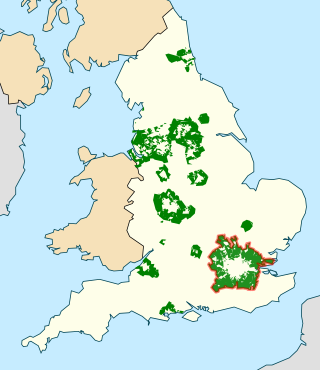
In British town planning, the green belt is a policy for controlling urban growth. The term, coined by Octavia Hill in 1875, refers to a ring of countryside where urbanisation will be resisted for the foreseeable future, maintaining an area where local food growing, forestry and outdoor leisure can be expected to prevail. The fundamental aim of green belt policy is to prevent urban sprawl by keeping land permanently green, and consequently the most important attribute of green belts is their openness.
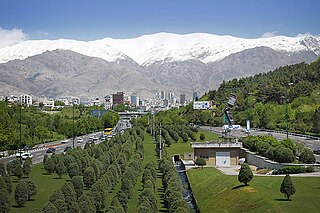
A green belt is a policy, and land-use zone designation used in land-use planning to retain areas of largely undeveloped, wild, or agricultural land surrounding or neighboring urban areas. Similar concepts are greenways or green wedges, which have a linear character and may run through an urban area instead of around it. In essence, a green belt is an invisible line designating a border around a certain area, preventing development of the area and allowing wildlife to return and be established.

CPRE, The Countryside Charity, formerly known by names such as the Council for the Preservation of Rural England and the Council for the Protection of Rural England, is a charity in England with over 40,000 members and supporters. Formed in 1926 by Patrick Abercrombie to limit urban sprawl and ribbon development, the CPRE claims to be one of the longest running environmental groups in the UK. CPRE campaigns for a "sustainable future" for the English countryside. They state it is "a vital but undervalued environmental, economic and social asset to the nation." They aim to "highlight threats and promote positive solutions." They campaign using their own research to lobby the public and all levels of government.

Wakefield, commonly known as the City of Wakefield, is a local government district with the status of a city and metropolitan borough in West Yorkshire, England. Wakefield, the largest settlement, is the administrative centre of the district. The population of the City of Wakefield at the 2011 Census was 325,837. The district includes the Five Towns of Castleford, Featherstone, Knottingley, Normanton and Pontefract. Other towns include Hemsworth, Horbury, Ossett, South Elmsall and South Kirkby. The city and district are governed by Wakefield Council from the County Hall.

Ribbon development refers to the building of houses along the routes of communications radiating from a human settlement. The resulting linear settlements are clearly visible on land use maps and aerial photographs, giving cities and the countryside a particular character. Such development generated great concern in the United Kingdom during the 1920s and the 1930s as well as in numerous other countries during the decades since.
Sheffield is a geographically diverse city in England. It nestles in the eastern foothills of the Pennines and the confluence of five rivers: Don, Sheaf, Rivelin, Loxley and Porter. As such, much of the city is built on hillsides, with views into the city centre or out to the countryside. The city is roughly one third urban, one third rural and one third in the Peak District. At its lowest point the city stands just 29 metres above sea level at Blackburn Meadows on the Rotherham border, rising up to over 500 m in some parts of the city to a peak of 548m at High Stones on the Derbyshire border; however, 89% of the housing in the city is between 100 and 200 metres above sea level. Over 95% of the population resides in the main urban area.

The Metropolitan Green Belt is a statutory green belt around London, England. It comprises parts of Greater London, Berkshire, Buckinghamshire, Essex, Hertfordshire, Kent and Surrey, parts of two of the three districts of Bedfordshire and a small area in Copthorne, Sussex. As of 2017/18, Government statistics show the planning designation covered 513,860 hectares of land.

The Nottingham and Derby Green Belt is a green belt environmental and planning policy for the cities of Derby and Nottingham in the East Midlands region of England. It includes designated parts of several districts in the surrounding counties of Derbyshire and Nottinghamshire. Management is mainly performed by the local planning authority on guidance from central government.

The Burton upon Trent and Swadlincote Green Belt is a green belt environmental and planning policy that regulates the rural space between the towns of Burton upon Trent and Swadlincote, in the counties of Derbyshire and Staffordshire, within the East Midlands region of England. Essentially, the function of the belt in this location is to prevent the towns merging by lessening urban sprawl. It is managed by local planning authorities on guidance from central government.
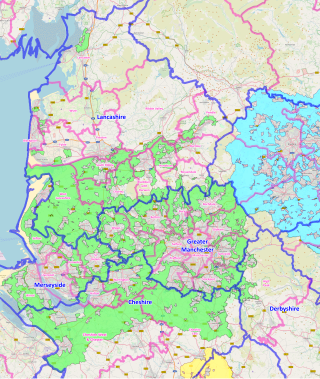
The North West Green Belt is a green belt environmental and planning policy that regulates the rural space throughout mainly the North West region of England. It is contained within the counties of Cheshire, Derbyshire, Greater Manchester, Lancashire, and Merseyside. Essentially, the function of the belt is to prevent the cities, towns and villages in the large Greater Manchester and Merseyside conurbations from merging. It is managed by local planning authorities on guidance from central government.

The South and West Yorkshire Green Belt is an environmental and planning policy that regulates the rural space within the Yorkshire and the Humber region of England. The function of the green belt policy in South and West Yorkshire is to manage development around the cities, towns and villages in the West Yorkshire Urban Area, the Sheffield urban area, Barnsley and Doncaster, to discourage urban sprawl. It is managed by local planning authorities on guidance from central government.

The West Midlands Green Belt is a statutory green belt environmental and planning policy that regulates the rural space within the West Midlands region of England. It is contained within the counties of the West Midlands, Shropshire, Staffordshire, Warwickshire and Worcestershire. Essentially, the function of the green belt is to more rigorously manage development around the cities, towns and villages in the large West Midlands conurbations centred around Birmingham and Coventry, discouraging convergence. It is managed by local planning authorities on guidance from central government.

The Stoke-on-Trent Green Belt is a green belt environmental and planning policy that regulates the rural space throughout mainly the West Midlands region of England. It is contained within the counties of Cheshire and Staffordshire. Essentially, the function of the designated area is to prevent surrounding towns and villages within the Stoke-on-Trent conurbation from further convergence. It is managed by local planning authorities on guidance from central government.
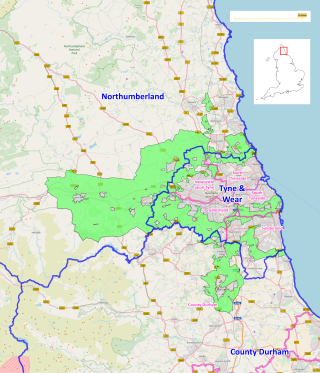
The North East Green Belt, also known as the Tyne & Wear Green Belt, is a non-statutory green belt environmental and planning policy that regulates the rural space in part of the North East region of England. It is centred on the county of Tyne and Wear, with areas of belt extending into Northumberland and County Durham. The belt functions to protect surrounding towns and villages outside the Tyneside/Newcastle-upon-Tyne and Wearside/Sunderland conurbations from further convergence. It is managed by local planning authorities on guidance from central government.

The Gloucester and Cheltenham Green Belt is a green belt environmental and planning policy that regulates the rural space throughout mainly the South West region of England. It is completely within the county of Gloucestershire. Essentially, the function of the designation is to prevent further convergence between the conurbations of Gloucester and Cheltenham. It is managed by local planning authorities on guidance from central government.
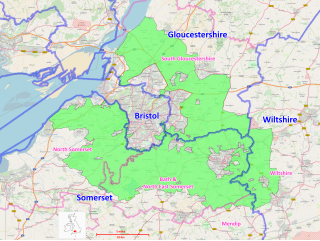
The Avon Green Belt, also known as the Bristol and Bath Green Belt, is a non-statutory green belt environmental and planning policy that regulates urban expansion and development in the countryside surrounding the cities of Bristol and Bath in the South West region of England. It covers areas in Bristol, South Gloucestershire, North Somerset, Bath and North East Somerset, Mendip, and Wiltshire. Essentially, the function of the green belt is to limit urban sprawl and maintain the open character of areas around the Bristol and Bath built up areas, and nearby towns and villages. The policy is implemented by local planning authorities on the basis of guidance from central government.

The Oxford Green Belt is a green belt environmental and planning policy that regulates the rural space in Oxfordshire, within the South East region of England. It is centred on the city of Oxford, along with surrounding areas. Its core function is to control urban growth and development in and around the Oxford built-up area. It is managed by the local planning authorities on basis of guidance from central government.

The Cambridge Green Belt is a non-statutory green belt environmental and planning policy that regulates the rural space in the East of England region. It is centred on the city of Cambridge, along with surrounding areas. Essentially, the function of the belt is to control development in and around the Cambridge built up area, to prevent coalescence of nearby villages and preserve the historical character of the city. It is managed by local planning authorities on guidance from central government.

Ethel Haythornthwaite was an English environmental campaigner, and a pioneer of the countryside movement. She founded the Sheffield Association for the Protection of Rural Scenery, also known as the Sheffield Association for the Protection of Local Countryside in 1924, which became the local branch of CPRE in 1927, and worked to protect the countryside of the Peak District from development. She forefronted the appeal to save the 747-acre Longshaw Estate from development, and helped acquire land around Sheffield that became its green belt. She was appointed to the UK government’s National Parks Committee, and helped to make the successful case for the National Parks and Access to the Countryside Act of 1949, which led to the founding of the Peak District National Park in 1951. She also helped make green belts part of government policy in 1955.

















